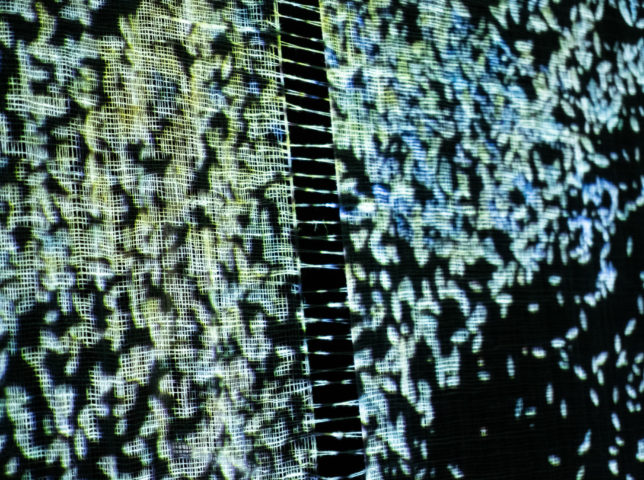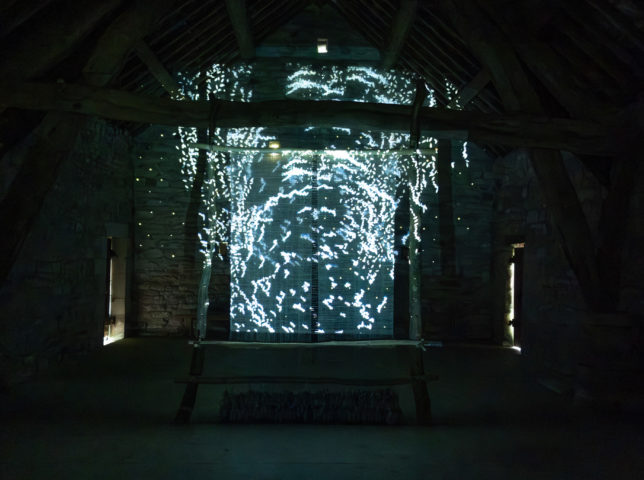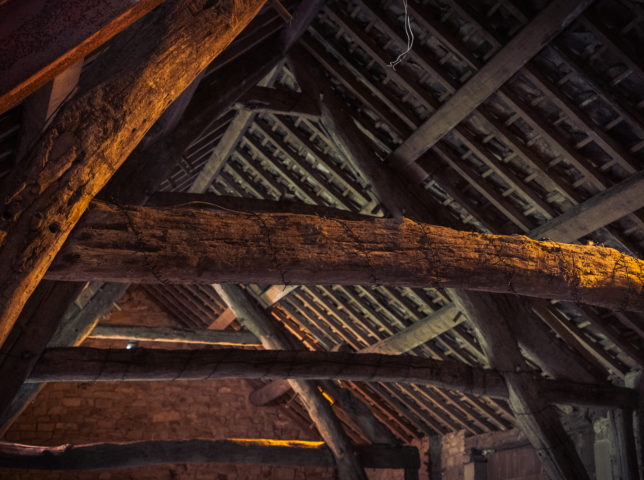For this piece artist Christine Borland worked with local spinners and weavers to create an installation at the Cruck Barn at Pendle Heritage Centre as part of this installation a huge loom was created using flax that had been grown in Scotland by various groups and cotton grown in Malawi spun by members of the Bowland Guild of Spinners, Weavers and Dyers as well as Christine herself to create a fustian cloth a mix of linen warp and cotton weft, historically associated with Lancashire.
For the final exhibition four films were cast onto this Projection Cloth on a loom built into the structure of this mediaeval cruck barn. Developed through the artist’s direct engagement with the growing, spinning and weaving of plant fibres, the films documented the movements inherent in the processes. A story of women’s lives emerges from the digital figure’s abstracted motions, accompanied by the sound-track of a dialogue between the artist and her daughter, which quotes from mythology, folklore, religion, philosophy, and natural history.
From growing and hand-working, through industrialisation, to our digital age and into a speculative future, the worktouches on plant and textile lore and the symbolism associated with it in the demonised image of women as witches. This resonates deeply here in Pendle, where 10 women and one man, some of whom were intimately linked to textile practices, were among the last people to be hanged in England for witchcraft in 1612.
Click the links to access narrative dialogues written by the artist and her daughter Grace Borland Sinclair, which accompany the Projection Cloth films; THE FLAX GROWER, THE FLAX SPINNER, THE COTTON GROWER and THE COTTON SPINNER.
To hear more about this work, listen to Christine’s conversation with artist Eva Sajovic and Amber Butchart in Episode 7 of the Cloth Cultures podcast, Season 3.
Thanks to The Department of Museums and Monuments, Malawi, Dr. Lovemore Mazibuko, Hezileki Perekamoyo and Comfort Tamanda Mtotha, Deveron Projects, #Lineation flax growers, Weaver, Lynne Hocking, Eilidh Guthrie, Helmshore Mills Textile Museum, The Bowland Guild of Weavers and Dyers and Spinners and John Butler.
The clay loom weights forming part of the installation are made from wild clay, dug from relevant sites; thanks to Lee Cartledge, Bentham Pottery, Lancashire, Andrew Appley, Fursbeck Pottery, Orkney and Eilidh Guthrie, Argyll, Scotland for their help.
This project was co-commissioned with British Textile Biennial.








